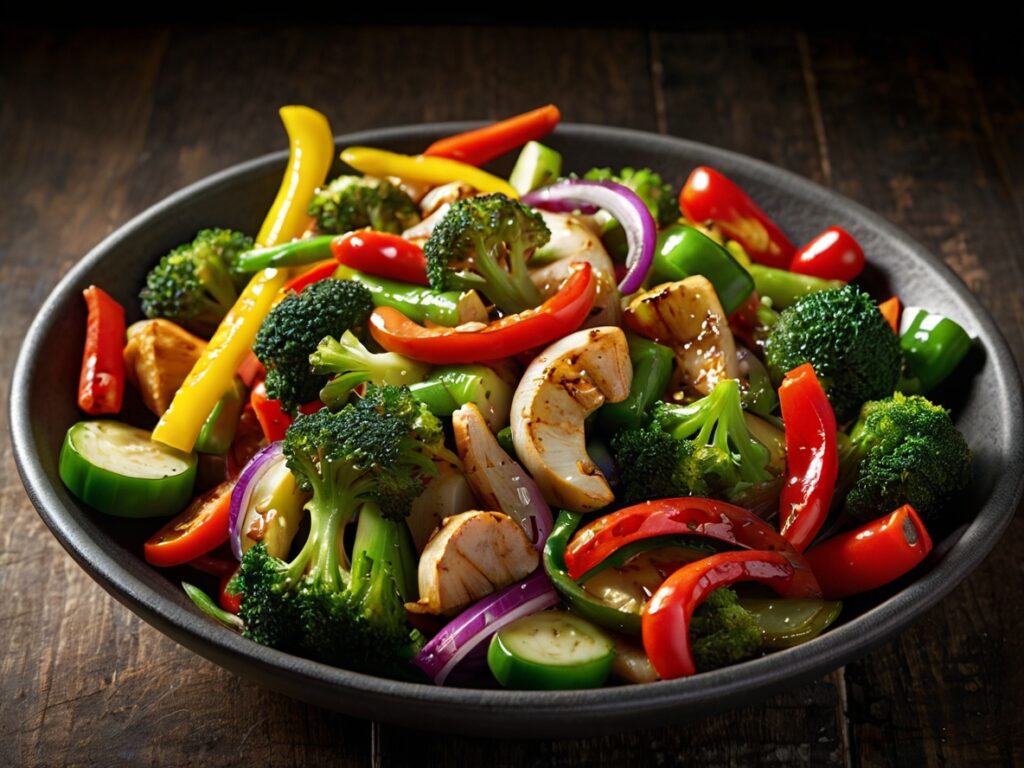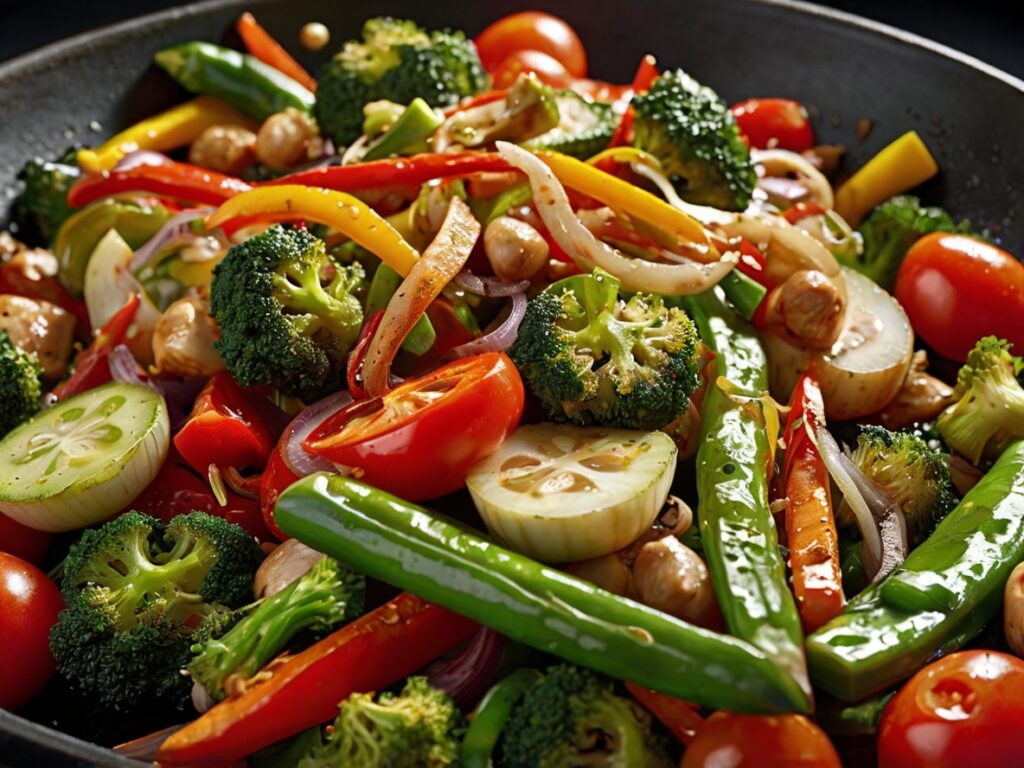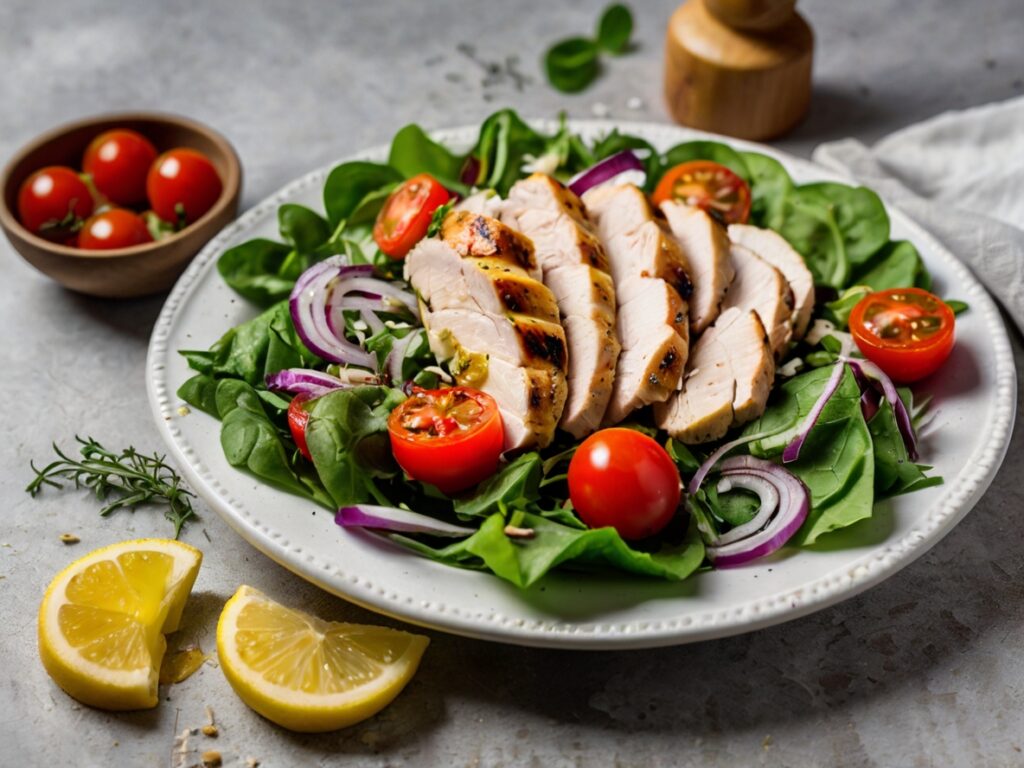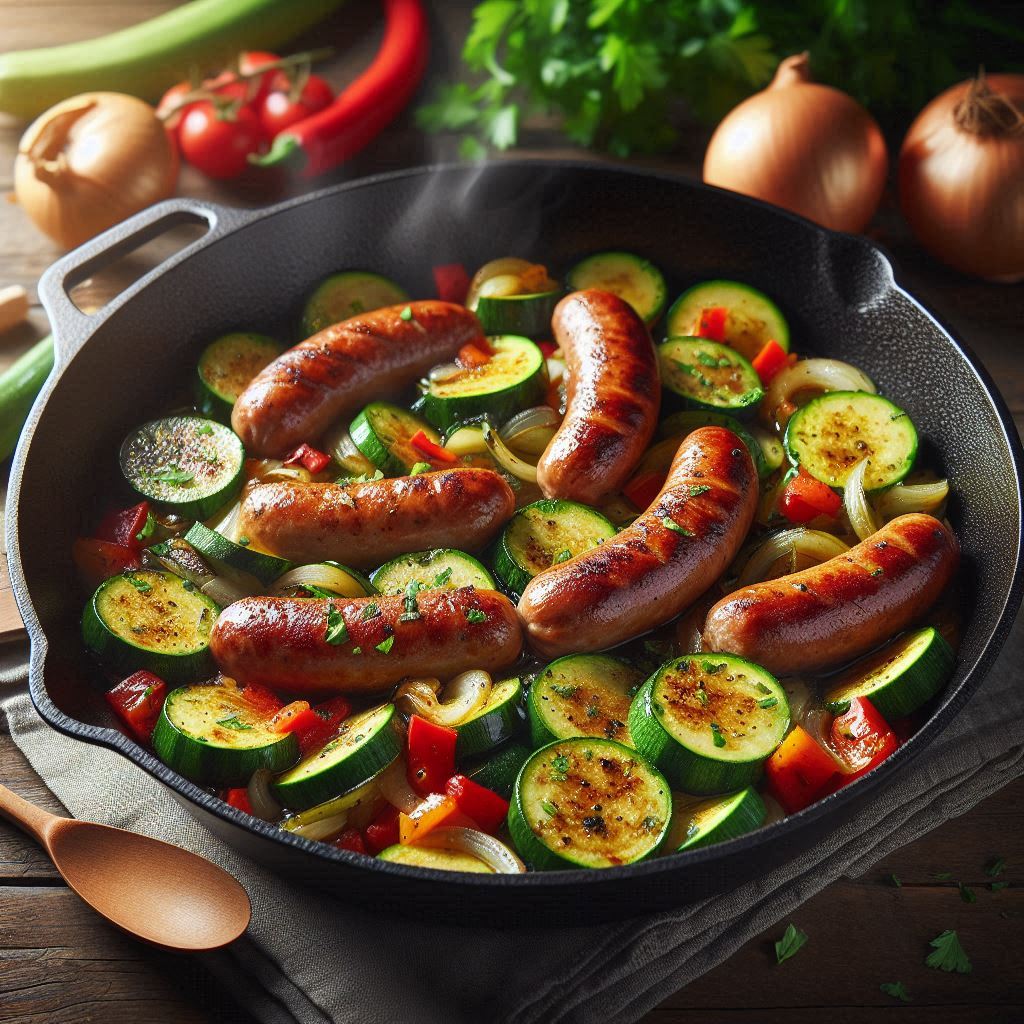Introduction
Hook: Imagine the aroma of sizzling vegetables, the vibrant colors dancing in the pan, and the anticipation of a fresh and flavorful meal.
Relevance: Whether you’re a health-conscious foodie, a busy parent, or simply someone who appreciates a delicious and nutritious dish, Garden Fresh Veggie Stir-Fry is sure to satisfy your cravings.
Purpose: In this article, we’ll explore the art of stir-frying, celebrate the abundance of garden-fresh vegetables, and share a mouthwatering recipe that will inspire you to get creative in the kitchen.
Introduction to Stir-Frying
Description: Stir-frying is a cooking technique that originated in East Asia and involves quickly cooking ingredients in a hot pan or wok with a small amount of oil. Benefits: Stir-frying preserves the natural flavors, colors, and nutrients of the ingredients, resulting in a vibrant and flavorful dish. Versatility: Stir-frying offers endless possibilities for creativity by allowing you to incorporate a variety of vegetables, proteins, sauces, and seasonings to suit your taste preferences.

Benefits of Garden Fresh Vegetables
Nutritional Value: Garden-fresh vegetables are rich in vitamins, minerals, and antioxidants essential for maintaining good health. Flavor Profile: Freshly harvested vegetables offer superior flavor and texture compared to frozen or canned counterparts, enhancing the overall taste of the stir-fry. Seasonality: Utilizing seasonal vegetables ensures optimal freshness and flavor while supporting local farmers and sustainable agriculture practices.
Ingredients
List of Ingredients:
- Assorted garden-fresh vegetables (such as bell peppers, broccoli, carrots, snap peas, mushrooms, and onions)
- Protein of your choice (tofu, tempeh, chicken, shrimp, or beef)
- Cooking oil (such as vegetable oil or sesame oil)
- Aromatics (garlic, ginger, or scallions)
- Sauce ingredients (soy sauce, rice vinegar, hoisin sauce, or oyster sauce)
- Optional toppings (sesame seeds, chopped peanuts, or cilantro)
Fresh Produce: Highlight the importance of using a variety of colorful vegetables to create a visually appealing and nutritious stir-fry. Protein Options: Offer suggestions for adding protein sources to the stir-fry, catering to different dietary preferences. Sauce Ingredients: Mention the key ingredients for creating a flavorful sauce that ties the dish together. Optional Toppings: Encourage experimentation with toppings to add texture and flavor to the stir-fry.
Step-by-Step Recipe Instructions
Preparation:
- Wash and prepare the vegetables by chopping them into bite-sized pieces. Mince garlic, ginger, or any other aromatics.
- If using tofu or tempeh, drain and press to remove excess moisture. Cut into cubes or slices. If using chicken, shrimp, or beef, slice or cube accordingly.
Cooking: 3. Heat a wok or large skillet over medium-high heat. Add cooking oil and swirl to coat the pan. 4. Add minced garlic, ginger, or scallions to the pan and sauté for 30 seconds until fragrant. 5. Add the protein to the pan and cook until browned and cooked through. Remove from the pan and set aside. 6. Add more oil to the pan if needed, then add the vegetables starting with the hardest vegetables like carrots and broccoli, and finishing with softer vegetables like bell peppers and snap peas. 7. Stir-fry the vegetables for 3-5 minutes until they are tender-crisp and vibrant in color.
Sauce Preparation: 8. In a small bowl, whisk together the sauce ingredients, such as soy sauce, rice vinegar, and hoisin sauce. 9. Pour the sauce over the vegetables in the pan and toss to coat evenly. Cook for an additional 1-2 minutes until the sauce thickens slightly.
Combining Ingredients: 10. Return the cooked protein to the pan and toss everything together until well combined and heated through. 11. Taste and adjust seasoning if necessary, adding more soy sauce or other seasonings as desired.
Serving: 12. Serve the Garden Fresh Veggie Stir-Fry hot over cooked rice or noodles. 13. Garnish with optional toppings such as sesame seeds, chopped peanuts, or fresh cilantro before serving.

Serving Suggestions
Presentation: Transfer the Garden Fresh Veggie Stir-Fry to a large serving platter or individual plates, arranging the colorful vegetables and protein attractively. Accompaniments: Serve the stir-fry with steamed rice, brown rice, quinoa, or noodles to create a balanced and satisfying meal. Garnishes: Sprinkle sesame seeds, chopped peanuts, or fresh cilantro over the stir-fry for added texture and flavor. Condiments: Offer condiments such as soy sauce, chili garlic sauce, or sriracha on the side for diners to customize their dish according to their taste preferences.
Health Benefits
Nutrient Density: Garden Fresh Veggie Stir-Fry is packed with vitamins, minerals, and antioxidants from the colorful array of vegetables, promoting overall health and well-being. Low-Calorie Option: With its high vegetable content and minimal added fats, stir-fries are a satisfying and low-calorie meal option, making them suitable for weight management and maintaining a healthy lifestyle. Heart Health: Incorporating vegetables, lean proteins, and heart-healthy oils in stir-fries can help support cardiovascular health by reducing cholesterol levels and promoting heart function.
Tips for Success
- High Heat: Stir-fry requires cooking over high heat to ensure that the ingredients cook quickly and evenly without becoming soggy. Use a wok or large skillet and preheat it thoroughly before adding ingredients.
- Preparation: Prepare all ingredients in advance, including washing and chopping vegetables, mincing aromatics, and measuring out sauces and seasonings. This ensures that you can focus on cooking once you start stir-frying.
- Stirring Technique: Use a spatula or wooden spoon to continuously stir and toss the ingredients in the pan. This prevents sticking and ensures that the ingredients are evenly cooked.
- Even Sizing: Cut ingredients into uniform sizes to ensure that they cook at the same rate. This helps maintain the texture and appearance of the stir-fry.
- Cook in Batches: If you overcrowd the pan, the ingredients will steam rather than stir-fry. Cook ingredients in batches if necessary to maintain the high heat and achieve the desired results.
- Seasoning to Taste: Taste and adjust the seasoning of your stir-fry as you go. Add more soy sauce, salt, or other seasonings as needed to enhance the flavor of the dish.
- Finishing Touches: Finish the stir-fry with a drizzle of sesame oil, a sprinkle of sesame seeds, or a squeeze of fresh lime juice for added flavor and freshness.
Conclusion
In conclusion, Garden Fresh Veggie Stir-Fry offers a delicious and nutritious way to enjoy the vibrant flavors of seasonal vegetables. With its versatility, simplicity, and health benefits, stir-frying is a cooking technique that can be easily incorporated into your culinary repertoire.
By following our step-by-step recipe instructions and incorporating fresh ingredients, you can create a flavorful and satisfying meal that will delight your taste buds and nourish your body. Whether you’re cooking for yourself, your family, or guests, Garden Fresh Veggie Stir-Fry is sure to impress with its colorful presentation and irresistible flavor.
So why wait? Head to your kitchen, gather your favorite vegetables and proteins, and embark on a culinary adventure with Garden Fresh Veggie Stir-Fry. Bon appétit!


